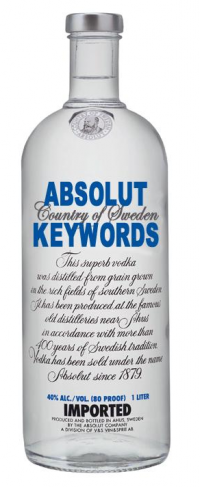A Minimalist Approach To Global Keyword Expansion & Monitoring
There have been a number of articles lately on keyword expansion and management but most of them seemed to skip over the basics especially at the global level. It is critical to make sure you include the brand and product sets for each of the local markets. As we have been importing data into our […]
There have been a number of articles lately on keyword expansion and management but most of them seemed to skip over the basics especially at the global level. It is critical to make sure you include the brand and product sets for each of the local markets. As we have been importing data into our keyword management suite for global companies, we immediately notice that few companies can even find a list of their products and categories let along be actively monitoring it.
Andy Atkins-Krüger’s article last week to CMO’s suggesting they Can’t Manage Search Through Translation must have struck a nerve with companies doing the opposite since I received a half-dozen emails me asking what is the minimum they could or should do until they can review their current process. I reiterated Andy’s recommendation to “not translate your list of words but ask the locals supporting your business to create the list from scratch.”
Then the most frequent question was, “where do we start?” Strange I know, but many companies have never had to do this themselves – they depended on agencies or localization vendors.
For companies looking for a “place to start”, I suggest creating the table below and getting the local market sales team or a channel partner to tell you what the phrases should be. They should know what the product category is called in their market. If they don’t, replace them! Just make sure to ask them “is there any other way to write or say this in the local language” to cover all bases.
Minimalist Keyword Localization Worksheet
I propose that if your company does business outside of its home market, you must at least understand the performance of your core product names and the produce category.
For example, if you are Absolut Vodka and you sell your products in multiple countries, you would monitor a list like this for US English:
Absolut has many products, so this is just a subset of them. The same chart for Germany with the German language variations would be:

From this step, you could use the techniques and worksheet I wrote about last December in New Markets & New Keywords to find common phrases between countries with a common language. This can help you scale more quickly and potentially reduce localization costs by sharing keywords, ads and messaging between markets where applicable.
Minimalist Performance Monitoring
From this matrix, you can create a simple report that aggregates the local market performance to enable the global manager to understand your consideration authority (how well you rank and exposure to those searching). In the example below, Product 1 is actively sold in 33 countries.
However, the product name is only in on the first page of Google in 28 of the 33 countries. The generic category name is only ranking 8 out of 33 times. If you are not performing for your brand, product and product categories, then let’s start to fix that problem before worrying about keyword expansion.
Before you comment on the value of ranking reports, understand for many companies that is the only proxy for performance they have. In many smaller markets, companies don’t have Web analytics or have them set up properly to measure search visitors. Hard to believe, I know, but I just imported data from a Fortune 100 company that could only do a rolled up – “outside US” report of performance of their international sites.
This simple report gives the manger a quick lens into how their core products are doing anywhere in the world. Obviously, if you can add clicks, conversions and revenue that is brilliant. By keeping it simple, any agency or team in the local markets can do it and allow you to roll up the data.
Keyword Expansion
One you have nailed this basic keyword matrix, start appending buy cycle terms to it such as “buy” or “sale” or in the case of Absolut, they could add drink variations that include the various flavors of vodka. This keeps the list uniform and easy to roll up into larger scale reporting, inclusion in paid search campaigns and social media monitoring.
Contributing authors are invited to create content for Search Engine Land and are chosen for their expertise and contribution to the search community. Our contributors work under the oversight of the editorial staff and contributions are checked for quality and relevance to our readers. The opinions they express are their own.
Related stories
New on Search Engine Land


